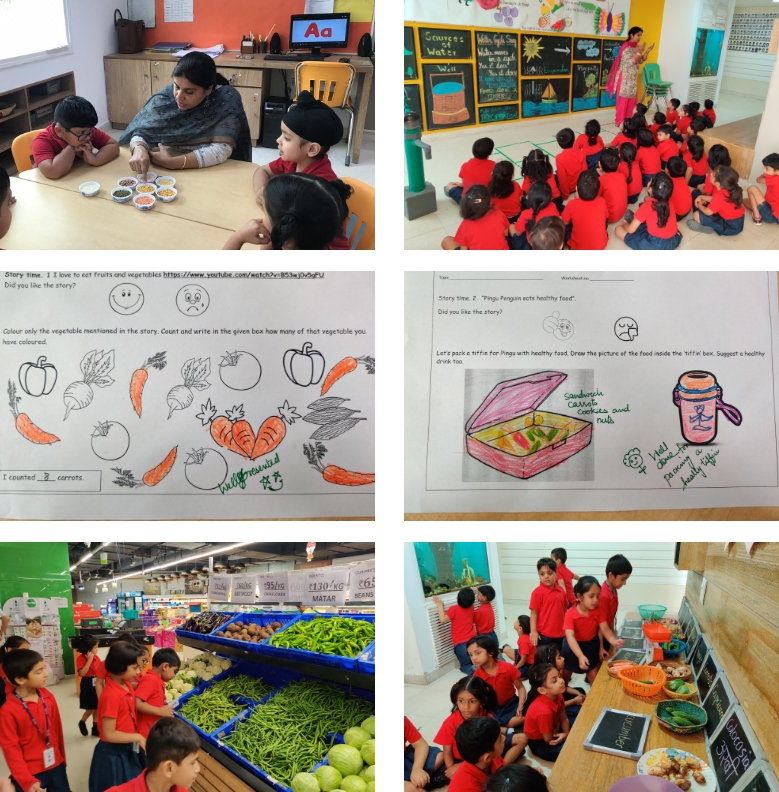


WHAT I EAT IS WHAT I AM
About the project
The need for a healthy and balanced diet was the focus of the project for Pallav students. This five-week project helped them learn about cereals, fruits and vegetables, identify food groups, analyse their own eating patterns and food habits, and even plan a balanced meal. Discussions, tactile discovery of vegetables, a visit to the supermarket, worksheets, maths grids, songs and integrated weekly programmes — all played a part in reinforcing new concepts. Further, students recorded the details of their own school lunches over a week’s time, also noted how much they usually ate and brought balanced meals to school.
Driving Question
- What are the five food groups and why is each of them important?
- What is a balanced diet?
- How can I have a balanced diet?
- What are some ways in which food can change?
- What are healthy eating habits?
Process
Children began the project with a discussion on the reasons why small babies were able to grow into large adults. A food recognition session followed, where children spent time finding out about seasonal vegetables at a mock vegetable market and learned their names in both English and Hindi.
Next, children visited the supermarket section of a department store. There, they discovered the difference between food categories such as a cereals, pulses, milk and dairy products, and baked goods, and observed the different ways in which food was stored.
Throughout the project weeks, science, storytelling and nature discovery sessions incorporated further explorations on the topic of food. The worksheets and grids that they completed in tandem served as assessment materials. Students analysed the contents of their snack boxes each day, identified a favourite food group in them, and judged whether they had brought balanced meals to school.

Project Culmination
As the finale for the project, the students in five groups planned balanced meals for mock birthday celebrations in class. Each group then contributed one home-cooked item, putting all of their dishes together to create a balanced meal for each celebration. Recitation and singing added to their enjoyment of the occasions.
Teacher Reflection
As they explored the theme of the project, the children almost seemed to become food detectives and meal planners, relating what they had learned to real life by seriously scrutinising and analysing their daily snacks, and taking an interest in eating healthy and balanced meals. They were often heard using the names of the foods and food groups that they had learned about, and were later able to reflect on how food helped them in different ways. Parents were enthusiastic participants in the Friday project sessions, doing their part in helping and guiding their children.
PRODUCTS AND DELIVERABLES
- Theme booklet and folder
- Friday Project items
- Theme-related craft
MATERIALS USED
- Samples of cereals, fruits and vegetables
- Theme-related story books
- Hand Puppets
- Food group cut-outs
- Assessment worksheets
- Planning a picnic menu
- Suggesting a healthy diet
- Find the healthy foods
















